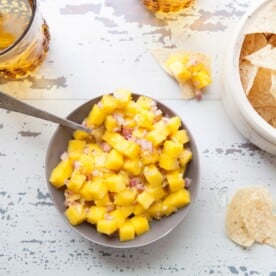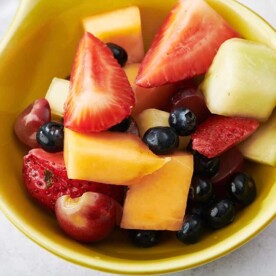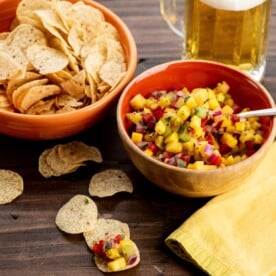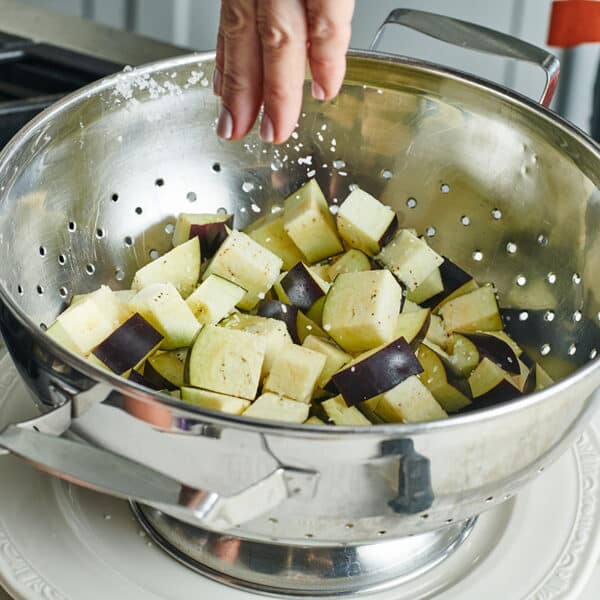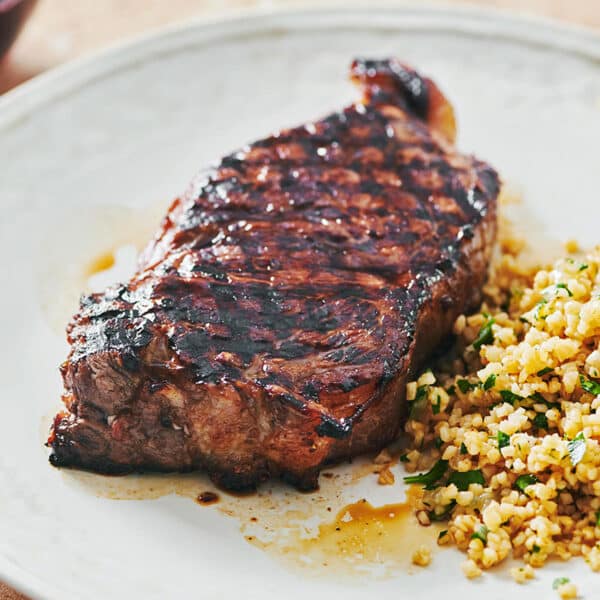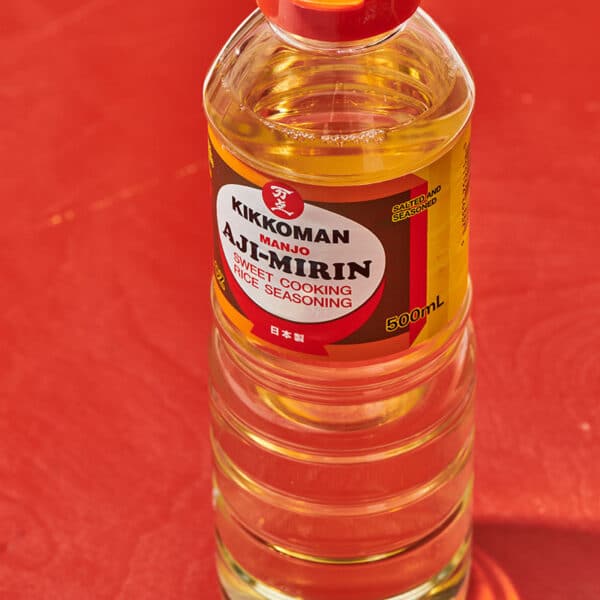How to Cut A Mango
on May 22, 2024, Updated Jan 19, 2025
This post may contain affiliate links. Please read our disclosure policy.
Everything you need to know about how to cut your mango into pretty cubes or slices and easy recipes for how to use this amazing tropical fruit.
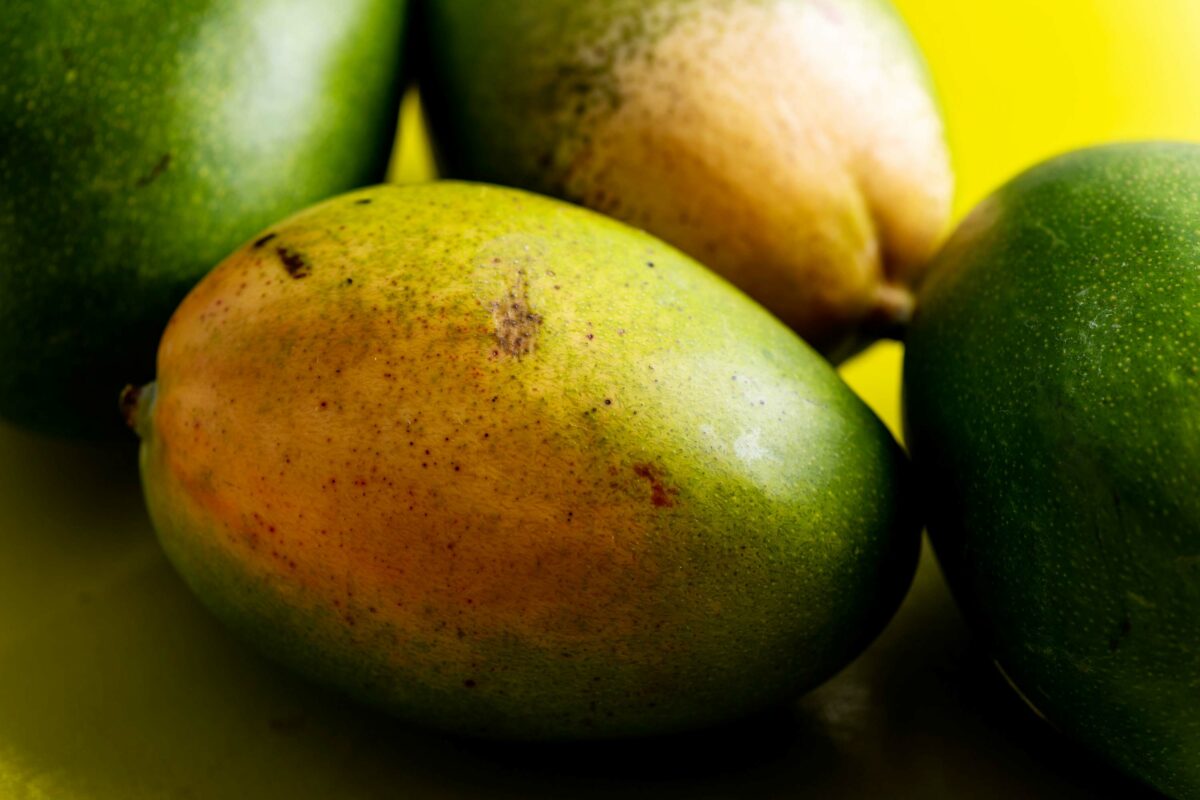
Is there anything better than a mango in late summer? I don’t think so. My love for mangos goes deep — I use them in as many recipes as I can, from Citrusy Mango Ginger Salsa to Fruit Salad and everywhere in between.
This sweet tropical fruit is a staple of my household, and once you know how to cut it, it will likely become one in yours as well. Also, check out How to Cut a Papaya while you’re at it if you want to have a full-on fruit party.
By signing up, you agree to our Privacy Policy.
What's In This Post?
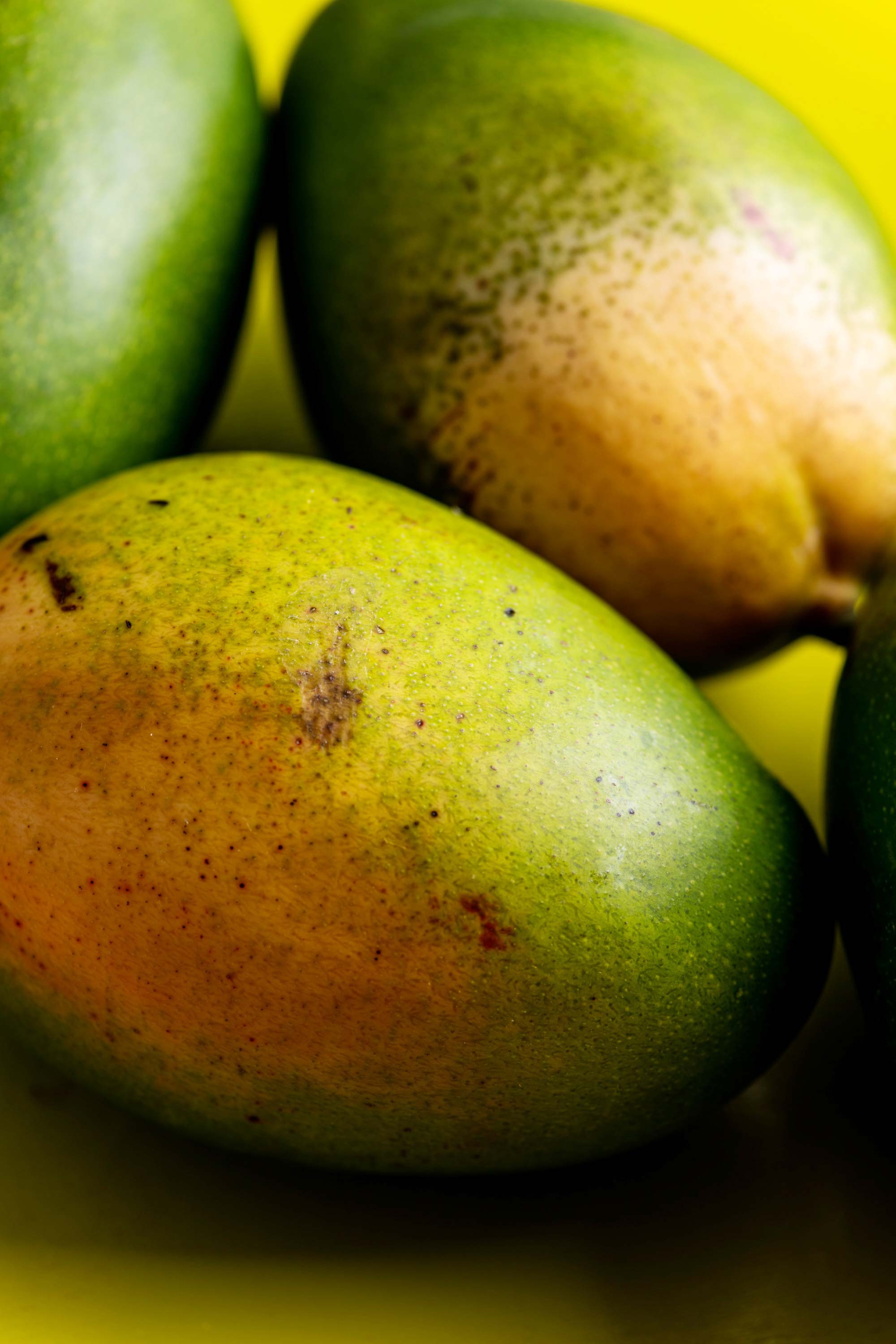
What Are Mangos?
Mangos are members of the “stone” fruit family, the same category as peaches, cherries, olives, and, interestingly, cashews. As with other stone fruits, the fleshy part of the fruit surrounds a single pit.
Mangos originally came to America in the late 1800s from India, where they continue to be the national fruit but are now grown worldwide in most tropical climates. There are almost 300 types of mangoes in India, though far fewer are grown or exported outside of that country. The Alphonso mango, called the King of Mangoes, is one of the most prized mangos in India.
What Do Mangos Look Like?
The most common mangoes sold in American supermarkets usually come from South America but may also be grown in California and Florida. Depending on the country of origin and the specific type, the mango can vary in size, shape, sweetness, skin color (reds, oranges, yellows, and greens, or a combo), and flesh color, which may be pale yellow, gold, or any shade of orange. The most common mangos found here are Haden and Tommy Atkin mangos, which have red/green/yellow outsides and juicy yellow insides.
What Do Mangos Taste Like?
Mangos are both sweet and sour. The flavor is floral and is often described as tropical. Mangoes taste like some mix between a pineapple, peach, and an orange — it’s the perfect combo.
Green mangos, or unripe mangos, are used often in savory dishes throughout Southeast Asia. They are harder and more tart than ripe mangos. They are the same fruit, they are just picked and eaten before they are ripe – the outside of an unripe mango is usually quite green, though the inside is orange, just like a ripe mango. Try them in Vietnamese Mango Salad with Shrimp
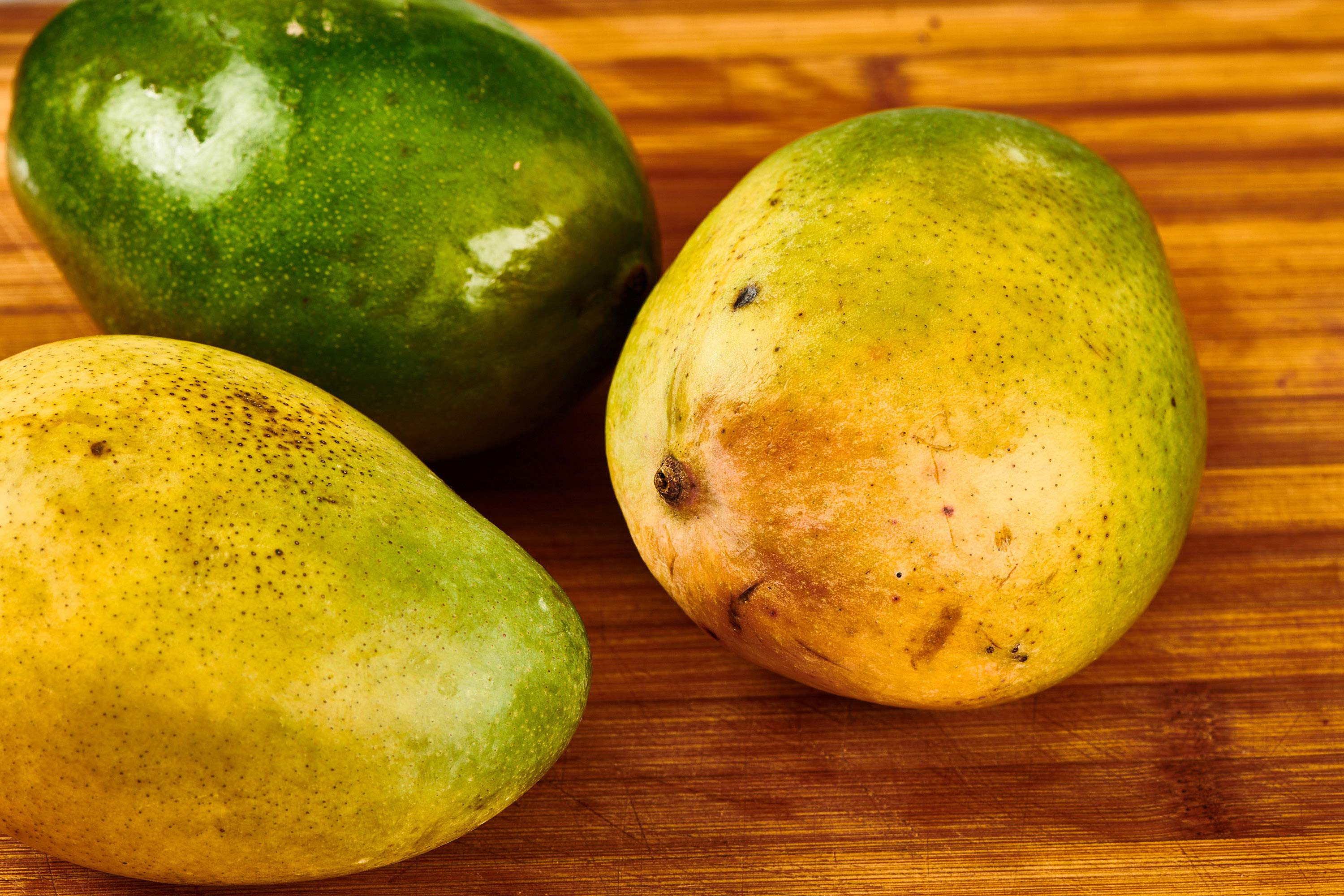
Why Do Mangos Make Some People Itchy?
Mango skin contains urushiol, which is the same oil that causes an itchy rash if you touch poison ivy, according to the New York Allergy and Sinus Center. People with a high sensitivity to poison ivy could get a bit itchy on their hands if exposed to the oil.
If you are concerned, use a plastic bag to pick up the fruit at the market and wash your hands after handling or peeling. Simple soap and water will easily wash off the urushiol within 10 minutes of skin exposure; however, once the oil seeps into the skin, it can’t be washed off. The flesh itself is usually fine for people who have sensitivity, but again, if you have an intolerance for poison ivy, go slow, try a small amount, and work up to a larger portion.
Whether you have sensitivity or not, it’s best not to eat the outer skin. The itchiness caused by the urushiol is not something you want to experience in your mouth or throat.
How to Tell When Mangos are Ripe
For mangos, color is not the best indicator of ripeness since color can vary greatly by variety. Instead, you should rely on smell and touch to determine a ripe mango. It should have a sweet aroma and be slightly soft to the touch.
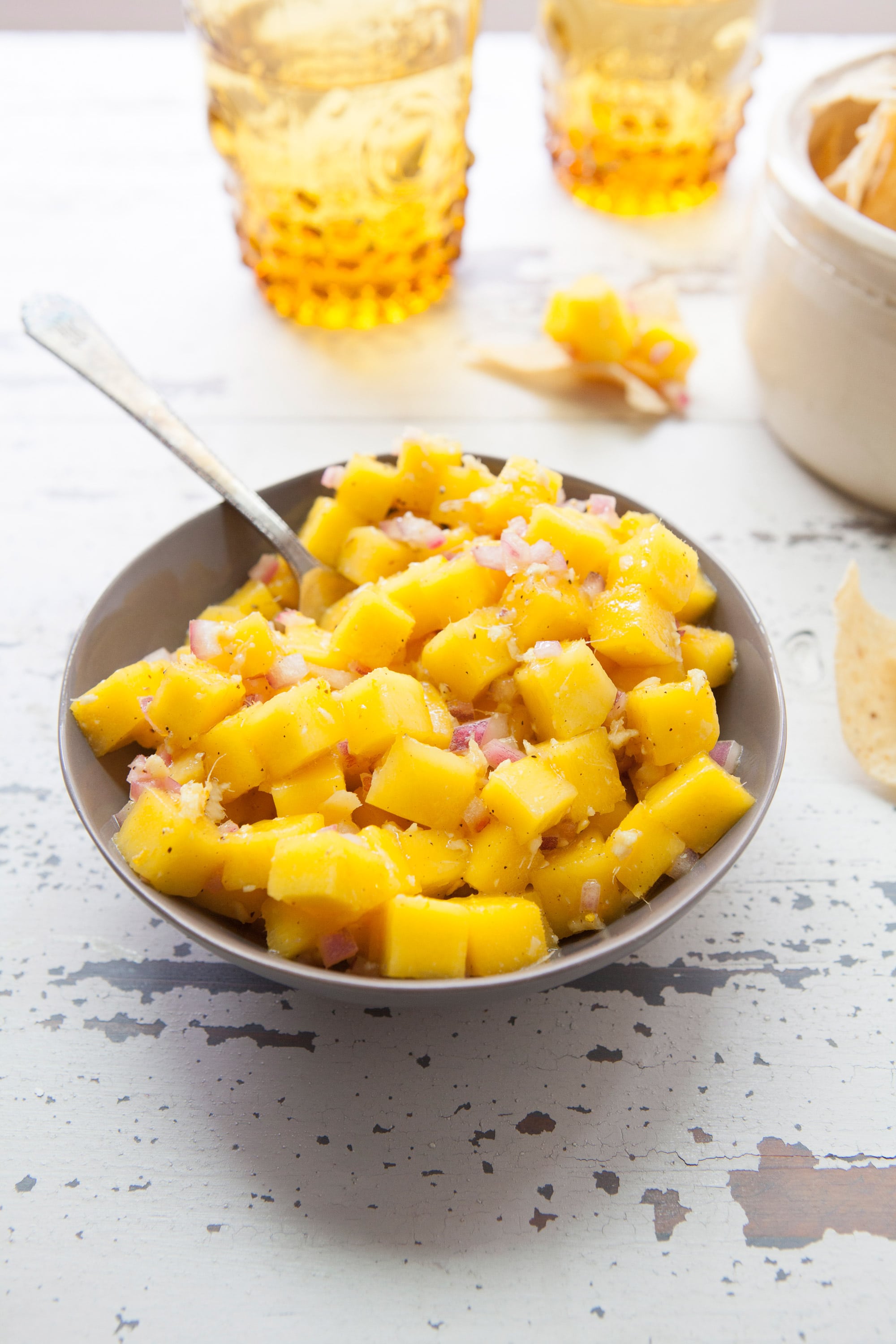
How to Store Mangos
Store mangoes at room temperature until they are soft, then move them to the refrigerator. Cut mango will last for up to 3 days in a container in the fridge. You can also store them frozen, either whole or precut. Frozen mango is great to puree or use to thicken smoothies.
How to Cut a Mango
- Peel: Use a peeler to remove the whole outer skin of the mango and discard.
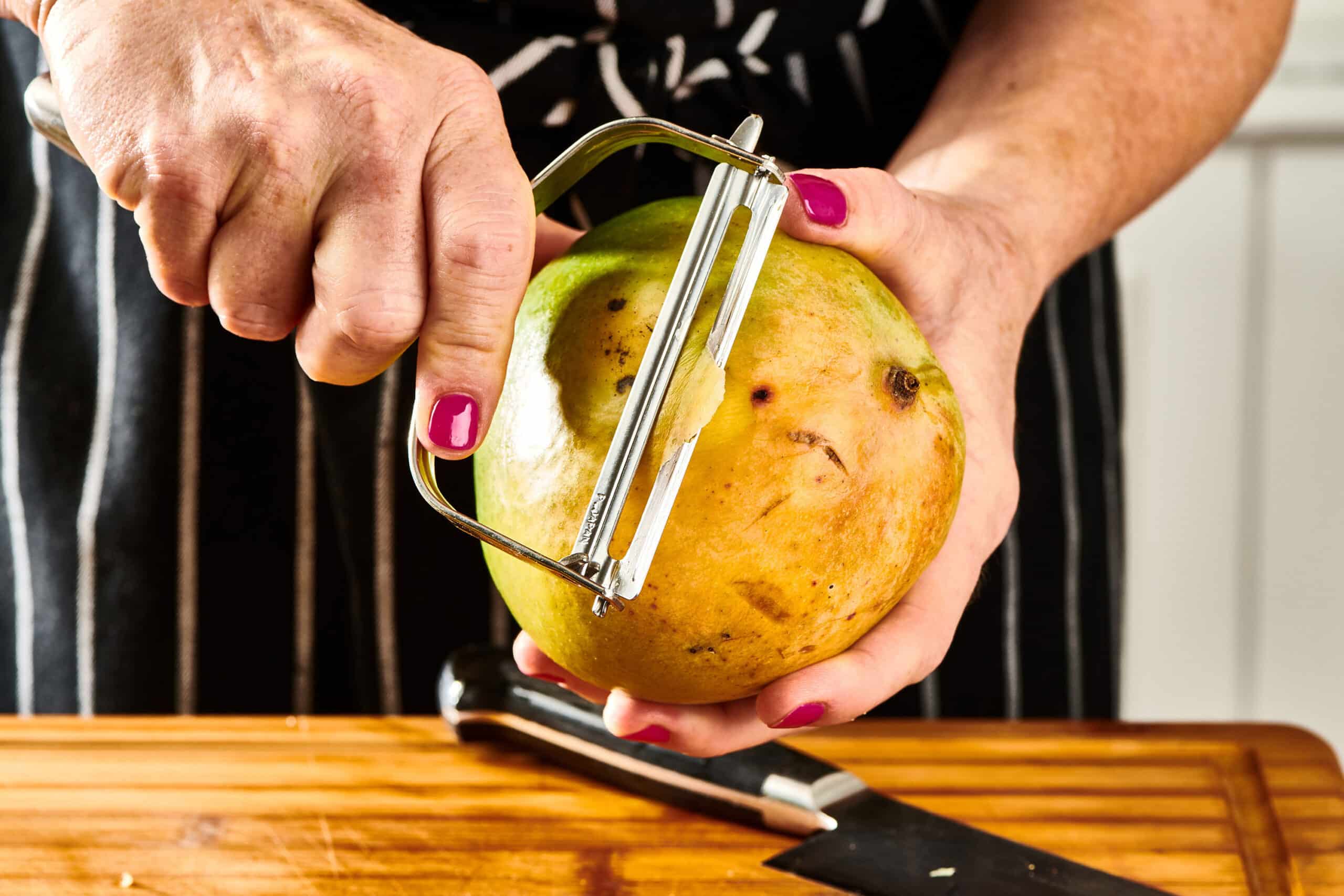
- Cut in a circle around the pit: Stand the mango up now so that you are looking down on the top, where the stem was. Using a knife, cut down against the flat sides of the pit (the pit is almost impossible to cut anyway).
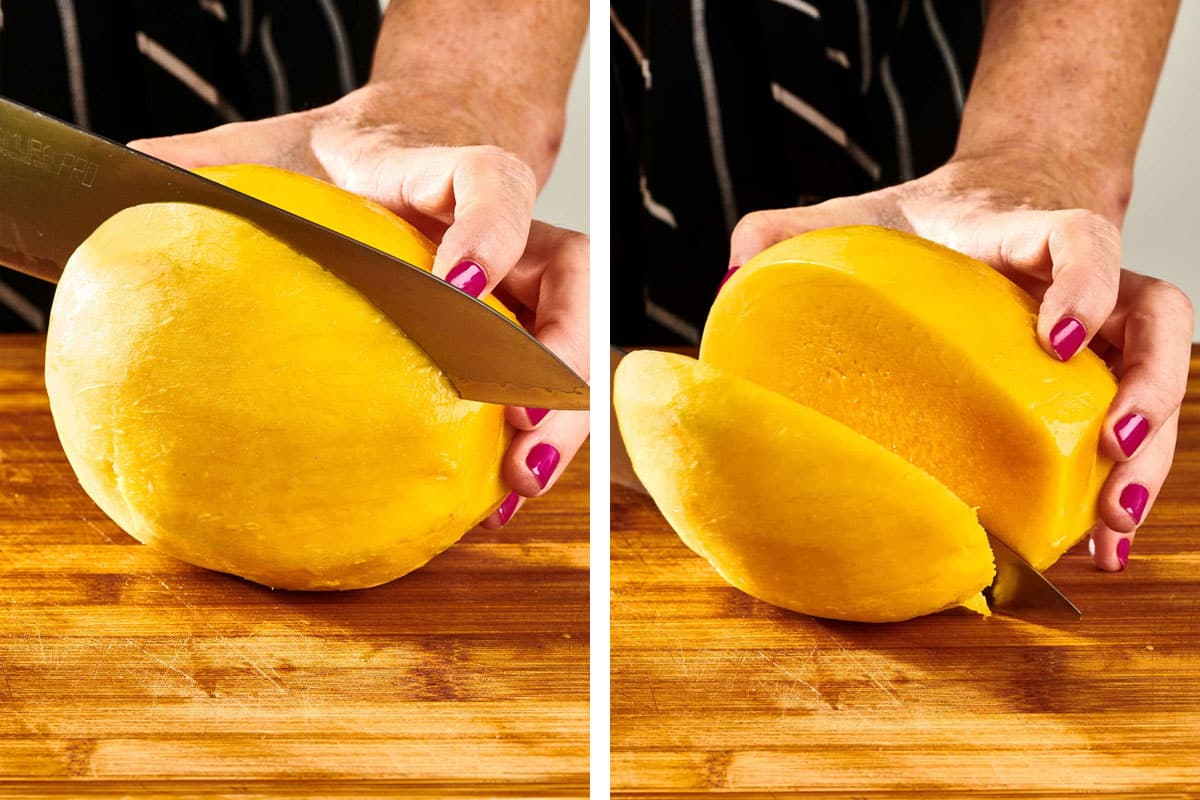
- Cut into smaller pieces as preferred: You’ll have two “halves” or “cheeks” now cut from each side, which can be cut up further to create smaller pieces for serving.
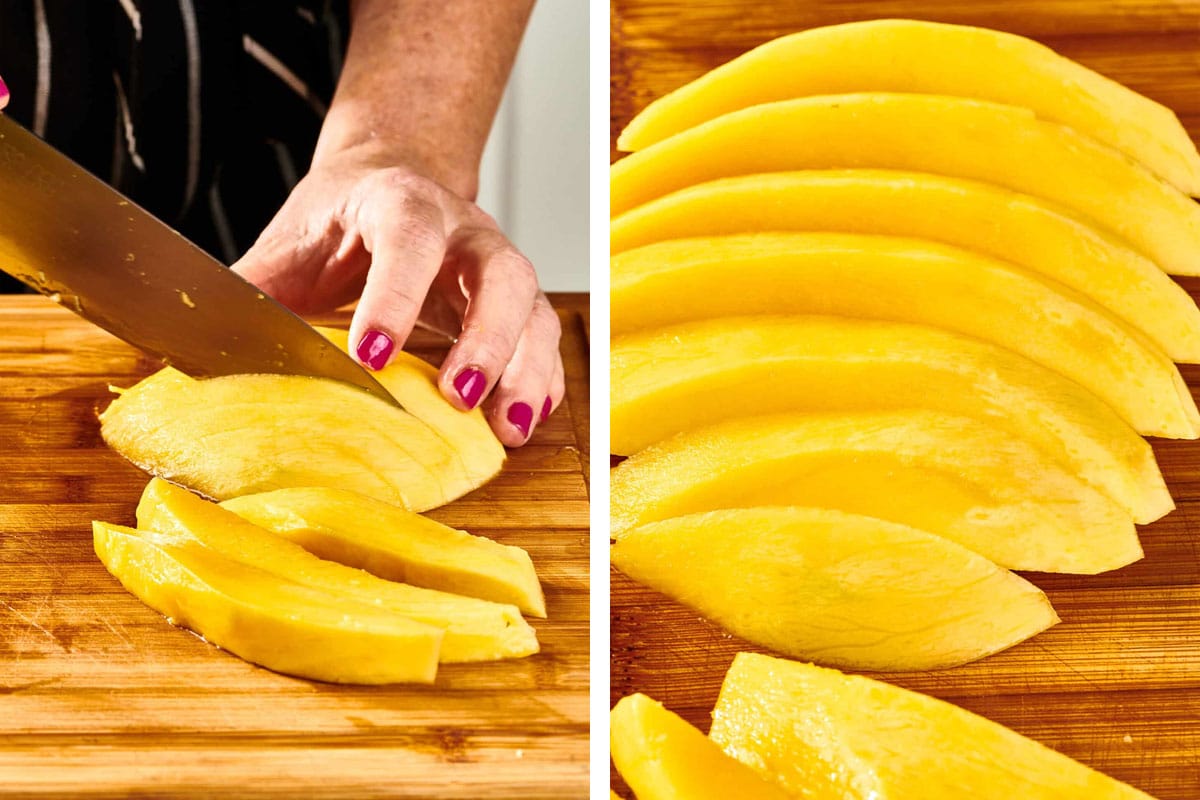
- Slice: Now slice the other two sides the same way, being careful to avoid the pit; try to cut along the curve of the pit to get the most fruit in one piece.
- Deal with the flesh around the pit: You will likely still have a lot of fruit surrounding the pit, which will just need to be creatively sliced away to create more pieces. These scraps are great for nibbling or adding to smoothies.
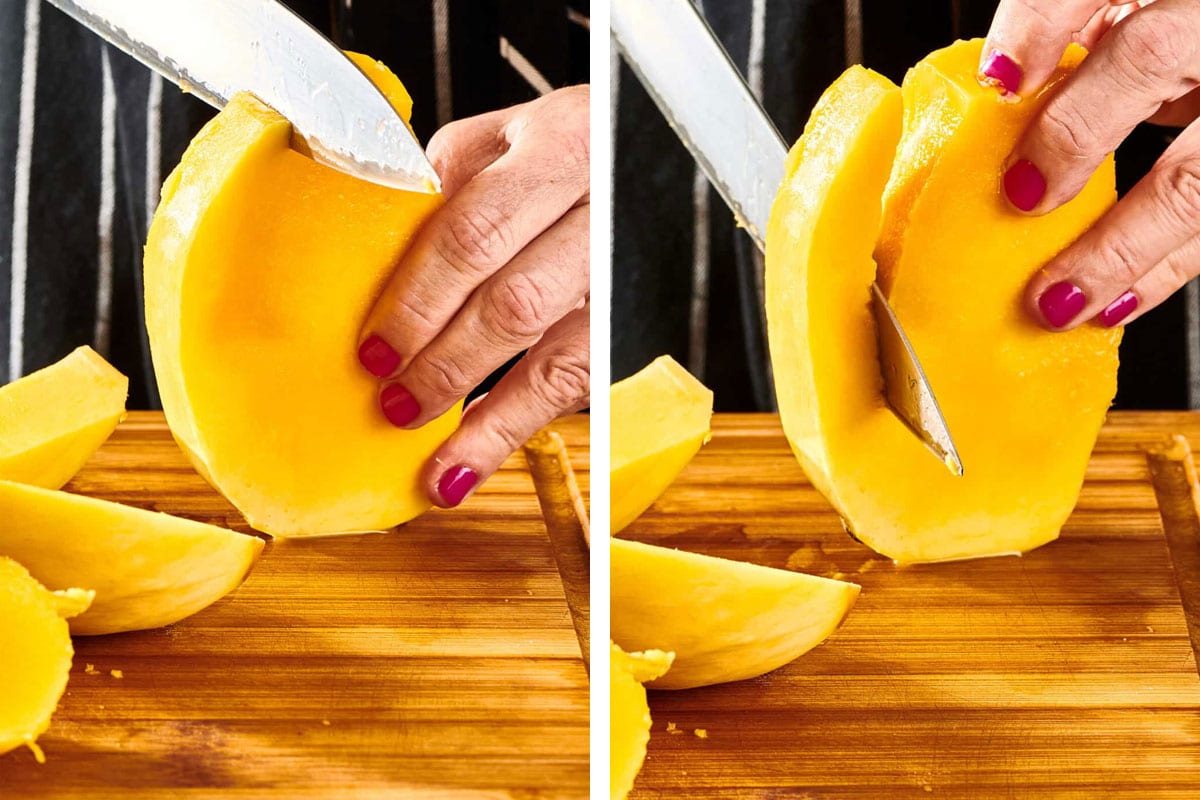
How to Cut a Mango: Everything you need to know about buying, storing, peeling and cutting mangos.
How to Cube Mango Without Peeling It First
- Slice in half: Leave the skin on, but use a knife to slice down the mango (as above, make sure to cut along the sides of the pit).
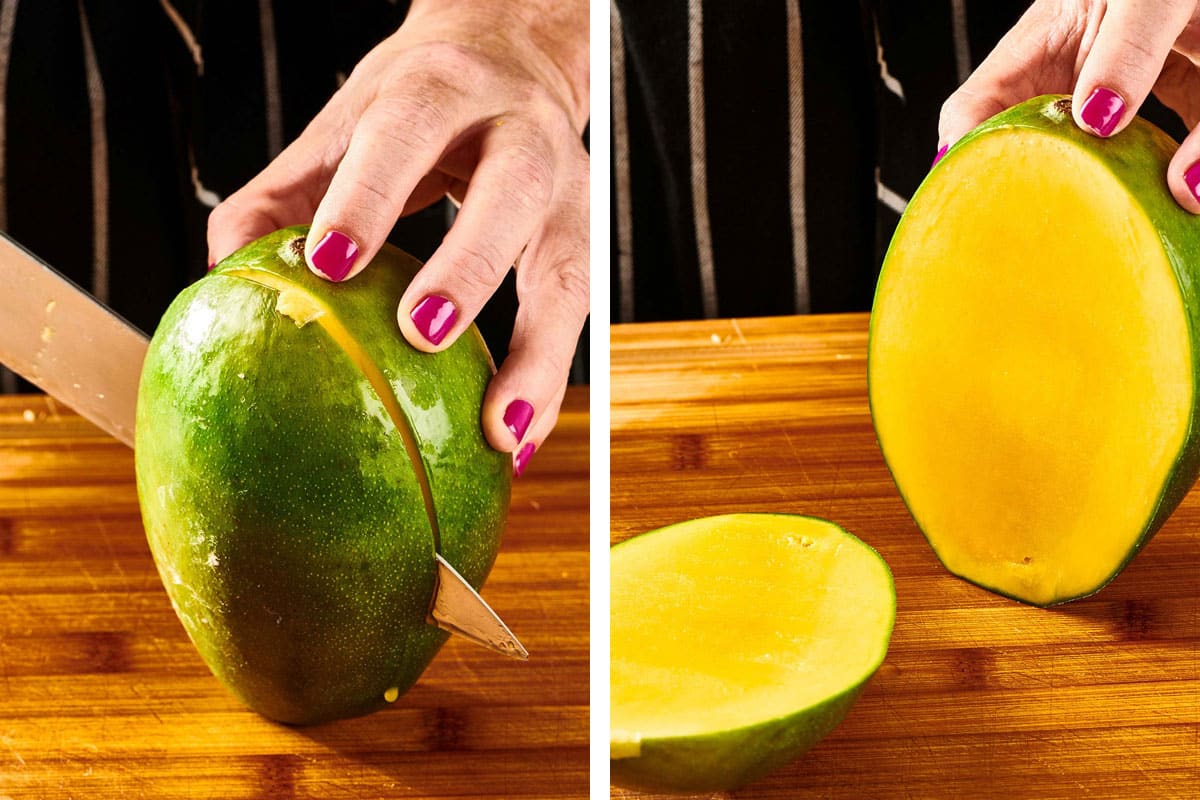
- Flip and score: Take one side and flip over so the fleshy part is facing up. With a knife, score the fleshy part width and lengthwise, making a small checkerboard and being careful NOT to cut through the skin on the bottom. Do the same with the second half.
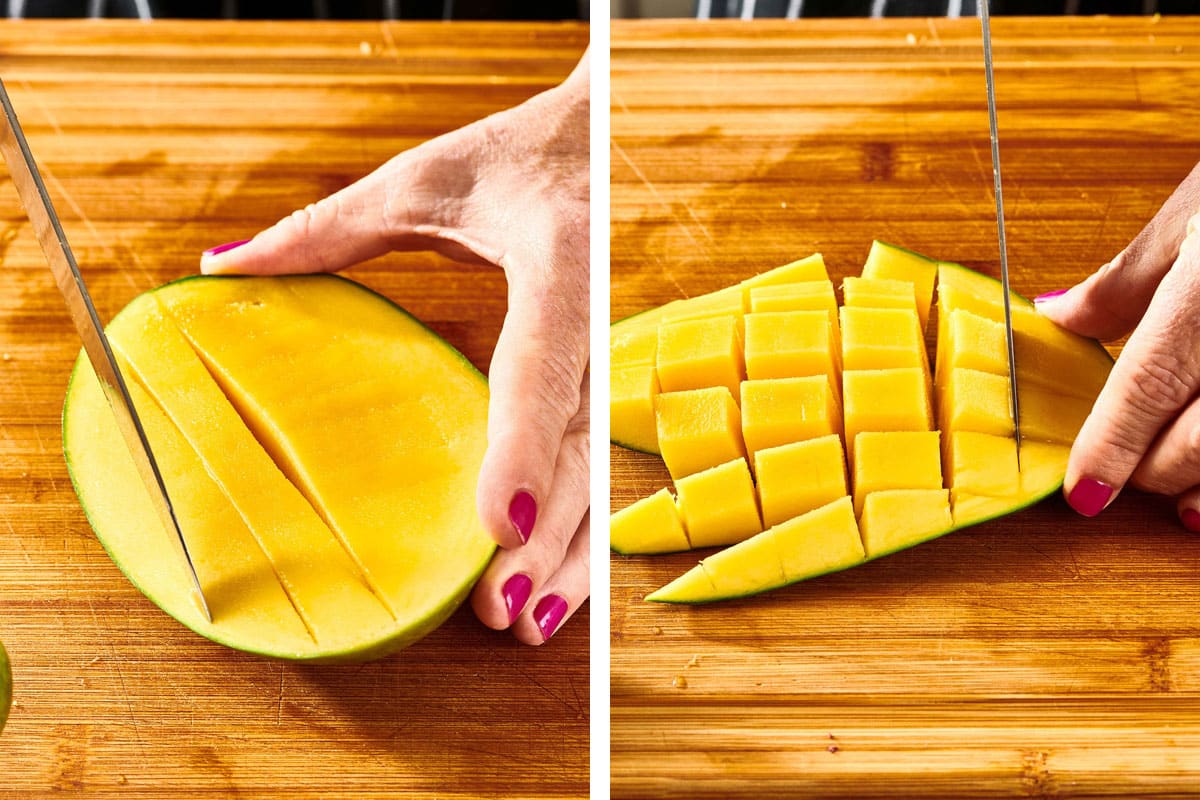
- Push the skin: Press the skin so that the cubes invert outwards but are still attached to the skin. Slice the cubes from the skin. OR, just eat the cubes right off the peel for a great snack.
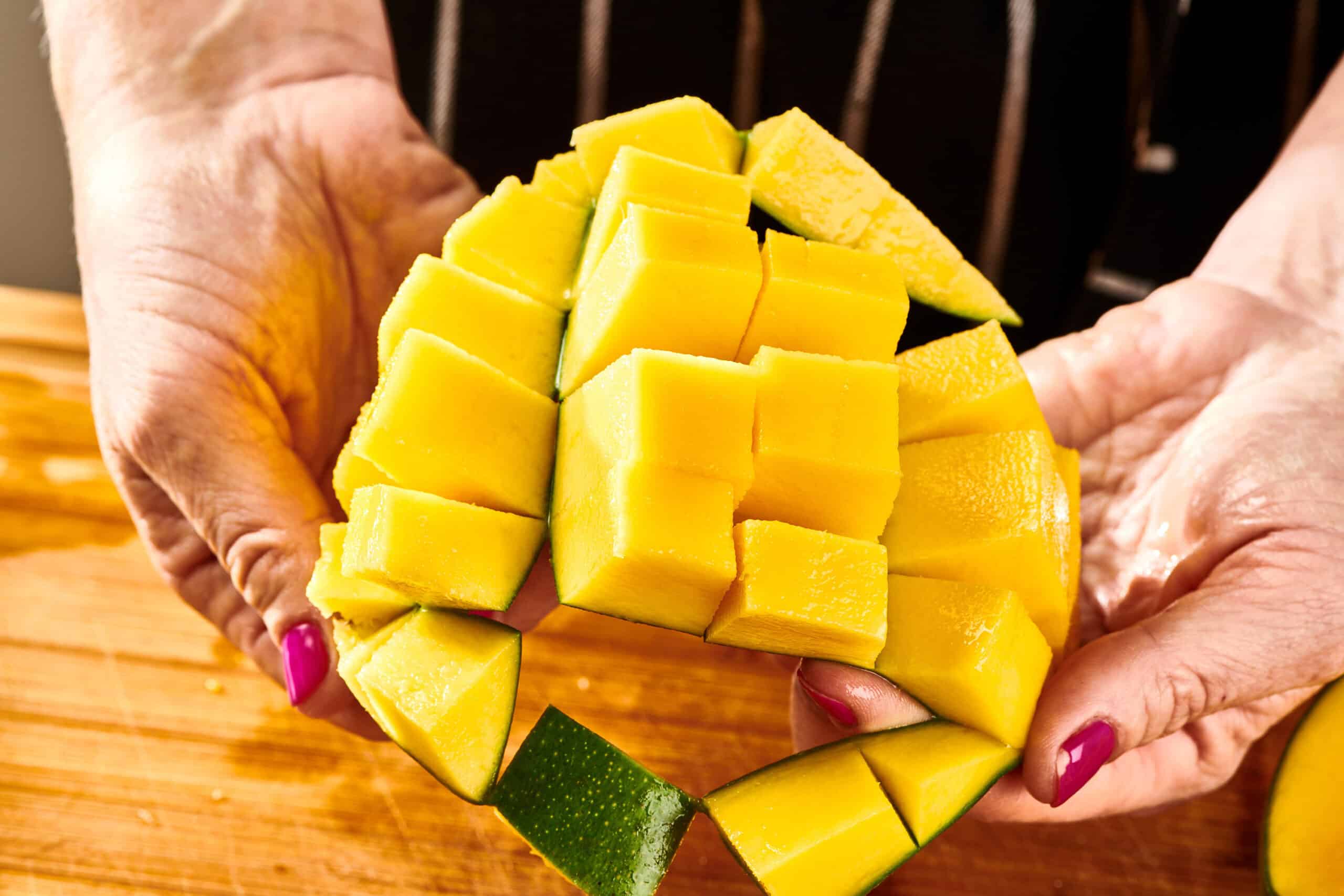
Fun Fact About Mangos
I’m not all that science-y when it comes to food, but I found this interesting: You can’t make Jell-O with fresh mango (or pineapple, papaya, guava, or kiwi). This is because all of these fresh fruits contain proteases that digest the links formed between collagen molecules that make the liquid turn into a gel. (Say that three times fast!) Canned or cooked fruit works, though, since the proteases are deactivated in the boiling process used in canning. Interesting, right?
FAQs
Mangos are also high in fiber and Vitamin C and have admirable amounts of Vitamin A and B6, according to Mango.org. They are also a good source of minerals like folate and copper. The average mango serving, 3/4 of a cup of mango has about 70 calories.
Peak mango season is from May to September. However, because mangos can come from so many different countries, you can buy mangos at any time of year. Different types may be available at different times, but Haden and Tommy Atkins mangoes should be available year-round.
Both are technically fine. “Mangos” is the preferred spelling in the U.S., and “mangoes” is used more often in the U.K.; but either works.
3 Fresh Mango Recipes
Try mango in these recipes:
Citrusy Mango Ginger Salsa
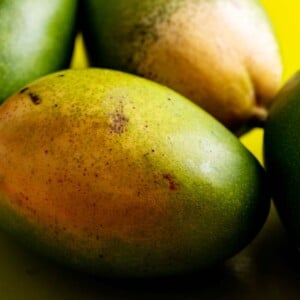
How to Cut A Mango
Equipment
Ingredients
- 1 mango
Instructions
- Use a peeler to remove the whole outer skin of the mango and discard.
- Stand the mango up now so that you are looking down on the top, where the stem was. Using a paring knife, cut down against the flat sides of the pit (the pit is almost impossible to cut anyway). You’ll have two “halves” or “cheeks” now cut from each side, which can be cut up further to create smaller pieces for serving.
- Now slice the other two sides the same way being careful to avoid the pit; try to cut along the curve of the pit to get the most fruit in one piece. You will likely still have a lot of fruit surrounding the pit, which will just need to be creatively sliced away to create more pieces.
